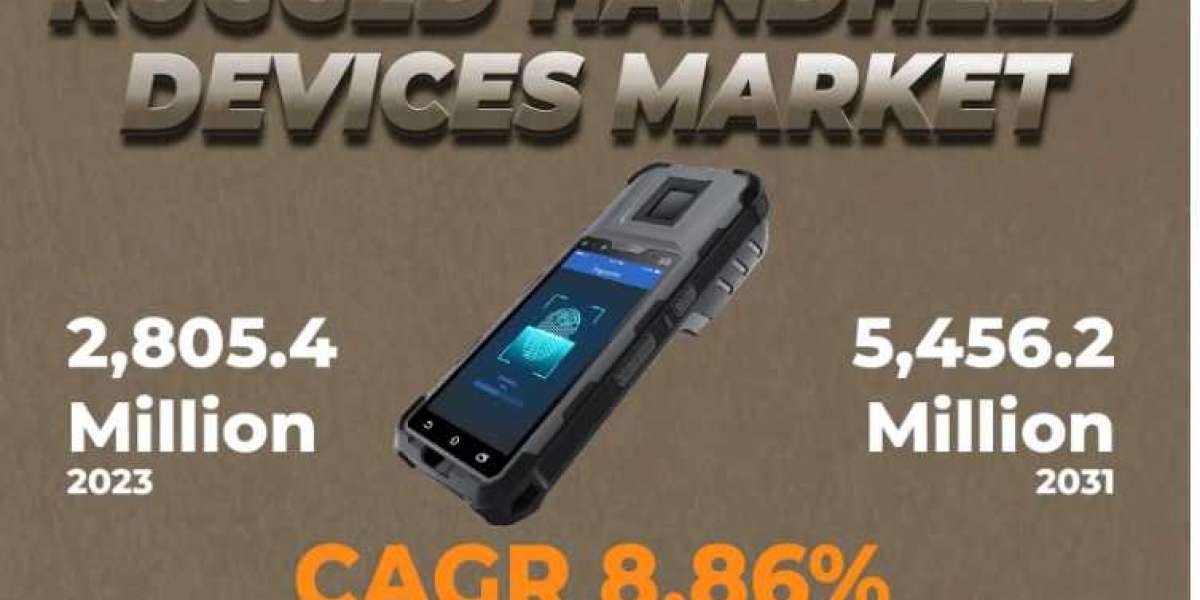The global Rugged Handheld Devices Market Global Industry was valued at USD 2,805.4 million in 2023 and is projected to grow from USD 3,011.8 million in 2024 to USD 5,456.2 million by 2031, exhibiting a CAGR of 8.86% during the forecast period. The market is expanding rapidly due to increasing demand for durable technology in various industries such as logistics, construction, and defense.
Key Innovations
- Zebra Technologies Partnership: Collaborated with Google Cloud and Qualcomm to leverage AI for improved operational productivity, showcased at Google Cloud Next 2024.
- Samsung’s Latest Launches: Galaxy XCover7 and Galaxy Tab Active5 feature military-grade durability and advanced 5G connectivity, enhancing productivity and security.
Browse Full Report Details @ https://www.kingsresearch.com/rugged-handheld-devices-market-1069
List of Key Companies in Rugged Handheld Devices Market
- Siemens
- Caterpillar
- CipherLab Co., Ltd.
- Datalogic S.p.A.
- Handheld Group
- Honeywell International Inc.
- KYOCERA
- Panasonic Connect.
- SAMSUNG
- Zebra Technologies Corp.
In logistics, rugged handheld devices streamline supply chain management through real-time tracking and efficient communication. The construction industry benefits from these devices by improving on-site data management and coordination. In healthcare, they enable accurate patient data management and access to critical information in real-time, enhancing the quality of care provided. Meanwhile, military applications rely on rugged handhelds for secure field communication and navigation, ensuring operational efficiency in extreme environments.
Technological advancements are further accelerating market growth. The integration of IoT, AI, and 5G capabilities in rugged devices has transformed their utility. These innovations allow for real-time data collection, predictive maintenance, and smarter decision-making. For instance, the transition to 5G networks enhances connectivity, reduces latency, and enables high-speed data transfer, critical for applications such as live video streaming and complex analytics. Devices like Samsung’s Galaxy XCover7 and Tab Active5 exemplify this trend, offering military-grade durability and advanced 5G connectivity
Key technological advancements have driven the market forward, especially with the integration of Internet of Things (IoT) and other emerging technologies. Rugged handheld devices are increasingly IoT-enabled, allowing for real-time data monitoring and seamless communication. These devices have transformed industries like construction, logistics, and field services, where they are used for tasks such as equipment status monitoring and workflow management. The healthcare sector is also witnessing increased adoption of rugged devices for purposes such as patient tracking and digital record management. These developments ensure that rugged handheld devices remain relevant in sectors requiring high precision and reliable data collection in challenging environments.
North America currently leads the global market for rugged handheld devices, largely driven by the U.S. military and defense sector, where ruggedness and reliability are critical. Investments in military-grade devices, such as handhelds for mission-critical operations, underscore the region's dominance. In contrast, the Middle East and Africa are emerging as the fastest-growing markets, propelled by increasing demand from military and industrial sectors. Countries like the UAE and Saudi Arabia are modernizing their military infrastructure, which includes the deployment of rugged handheld devices capable of operating in harsh desert environments.
The market is segmented by device type, with fully rugged devices leading the pack due to their superior durability. These devices are built to withstand dust, water, shocks, and extreme temperatures, making them essential for professionals in industries like manufacturing and construction. Fully rugged devices have become indispensable for maintaining operational efficiency and safety in environments where standard electronics would fail.
Despite these positive trends, the market faces challenges, particularly in terms of cost. Rugged handheld devices tend to be significantly more expensive than their consumer-grade counterparts. For instance, a Honeywell Dolphin CT40 Mobile Computer with basic features costs more than twice as much as a standard smartphone with similar functionalities. This high price point can act as a barrier for small businesses looking to adopt rugged devices for their operations. However, manufacturers can overcome this challenge by improving production processes and collaborating with commercial device makers to reduce costs, making rugged devices more accessible to a broader range of industries.
Opportunities for growth in the rugged handheld devices market are plentiful, particularly in sectors like healthcare and defense, where the need for secure, durable, and reliable technology is paramount. Advances in biometric authentication and sensor technology are making rugged devices more versatile and capable of meeting the evolving needs of these industries. For example, in healthcare, rugged devices can be used for secure access to patient data and real-time health monitoring, enhancing patient care and operational.
Future Outlook:
The rugged handheld devices market is poised for continued growth, supported by ongoing technological advancements and the rising need for durable, efficient devices in mission-critical operations. As industries prioritize operational reliability and connectivity, the demand for rugged solutions is expected to soar efficiency.
Contact Us:
Kings Research
Phone: (+1) 888 328 2189













